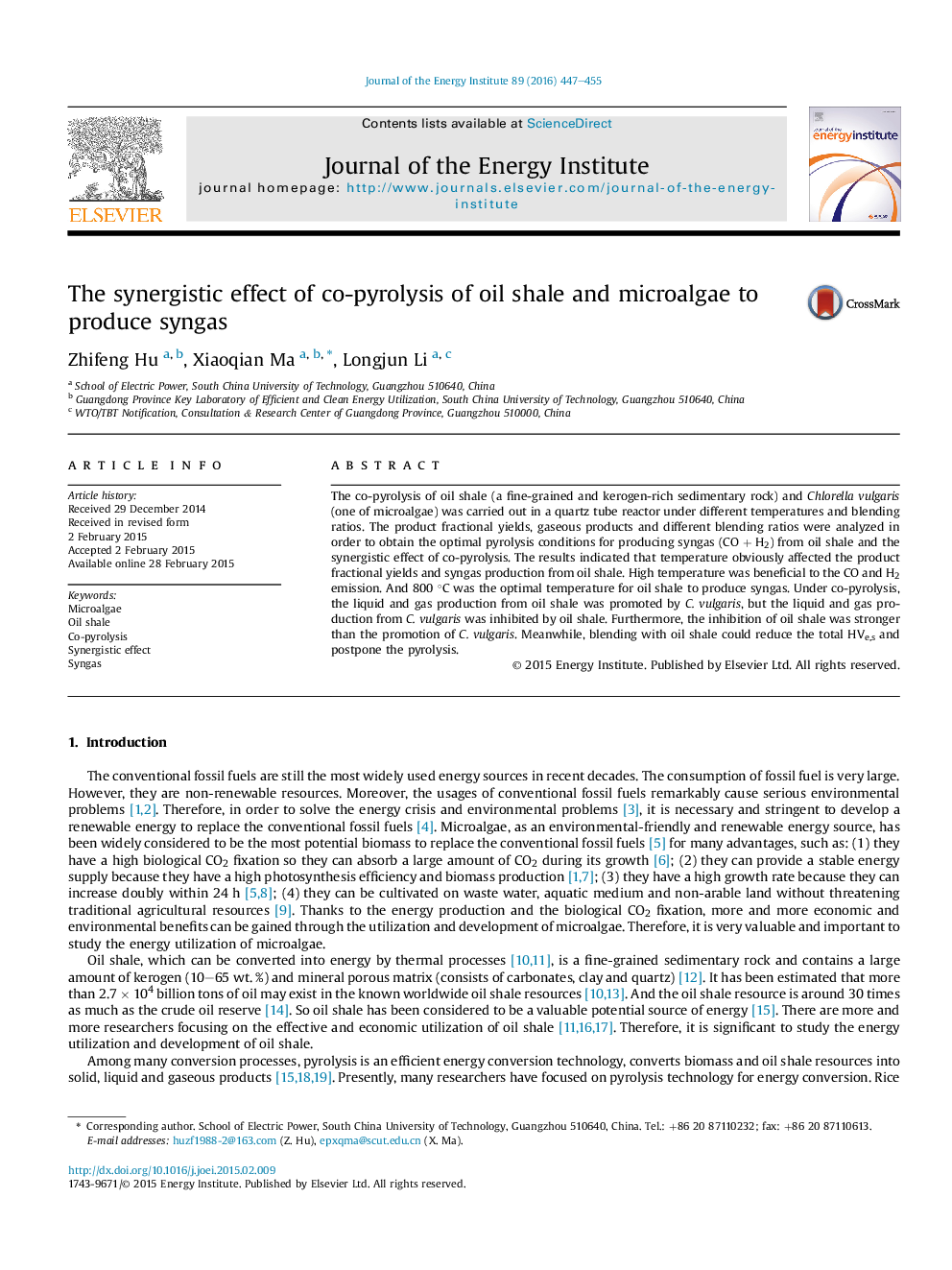| کد مقاله | کد نشریه | سال انتشار | مقاله انگلیسی | نسخه تمام متن |
|---|---|---|---|---|
| 1747585 | 1522253 | 2016 | 9 صفحه PDF | دانلود رایگان |
• 800 °C was the optimal temperature for oil shale to produce syngas.
• The liquid and gas production of oil shale was promoted by Chlorella vulgaris.
• The liquid and gas production of C. vulgaris was inhibited by oil shale.
• The inhibition of oil shale was stronger than the promotion of C. vulgaris.
• Blending with oil shale could markedly reduce HVe,s and postpone the pyrolysis.
The co-pyrolysis of oil shale (a fine-grained and kerogen-rich sedimentary rock) and Chlorella vulgaris (one of microalgae) was carried out in a quartz tube reactor under different temperatures and blending ratios. The product fractional yields, gaseous products and different blending ratios were analyzed in order to obtain the optimal pyrolysis conditions for producing syngas (CO + H2) from oil shale and the synergistic effect of co-pyrolysis. The results indicated that temperature obviously affected the product fractional yields and syngas production from oil shale. High temperature was beneficial to the CO and H2 emission. And 800 °C was the optimal temperature for oil shale to produce syngas. Under co-pyrolysis, the liquid and gas production from oil shale was promoted by C. vulgaris, but the liquid and gas production from C. vulgaris was inhibited by oil shale. Furthermore, the inhibition of oil shale was stronger than the promotion of C. vulgaris. Meanwhile, blending with oil shale could reduce the total HVe,s and postpone the pyrolysis.
Journal: Journal of the Energy Institute - Volume 89, Issue 3, August 2016, Pages 447–455
